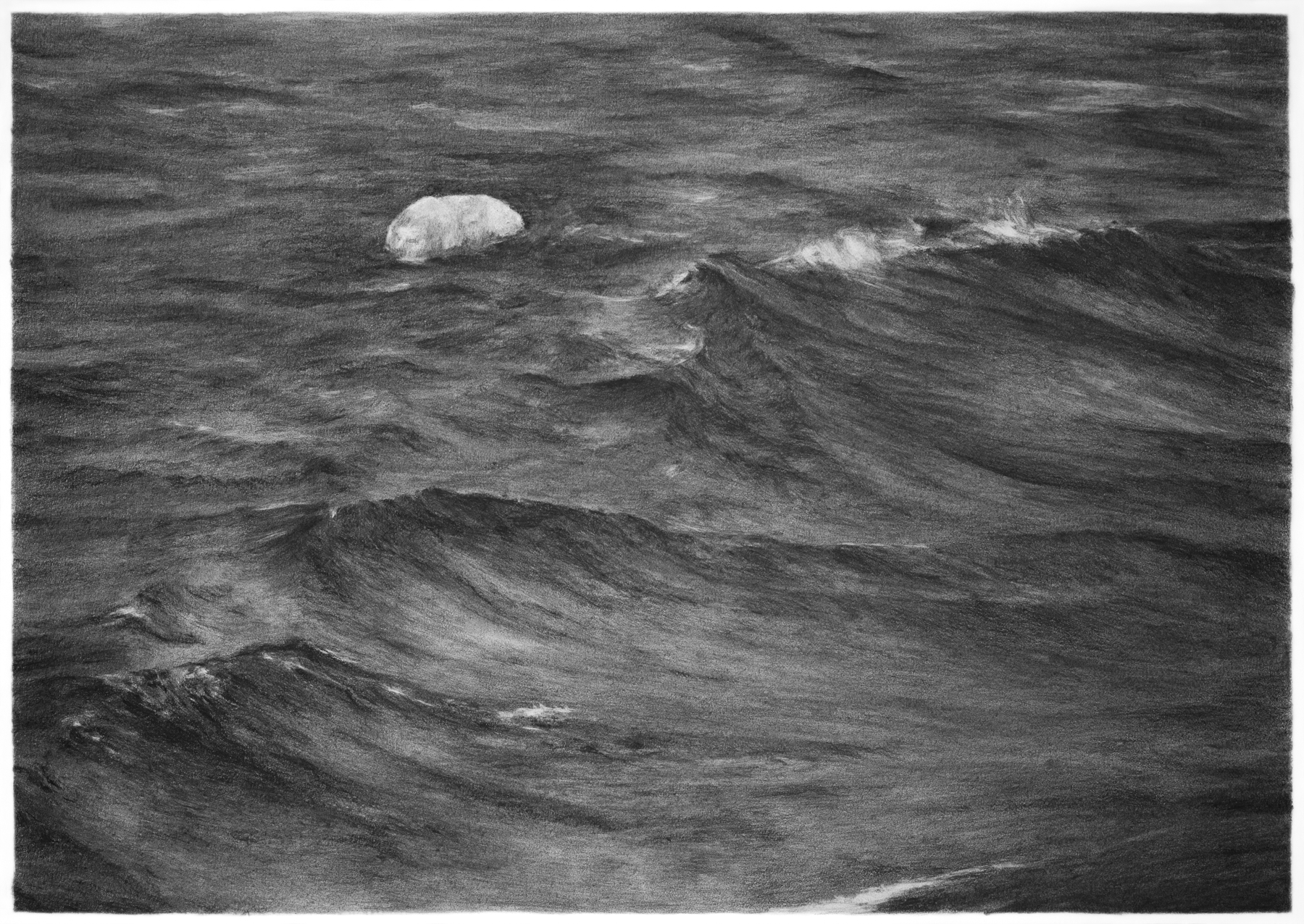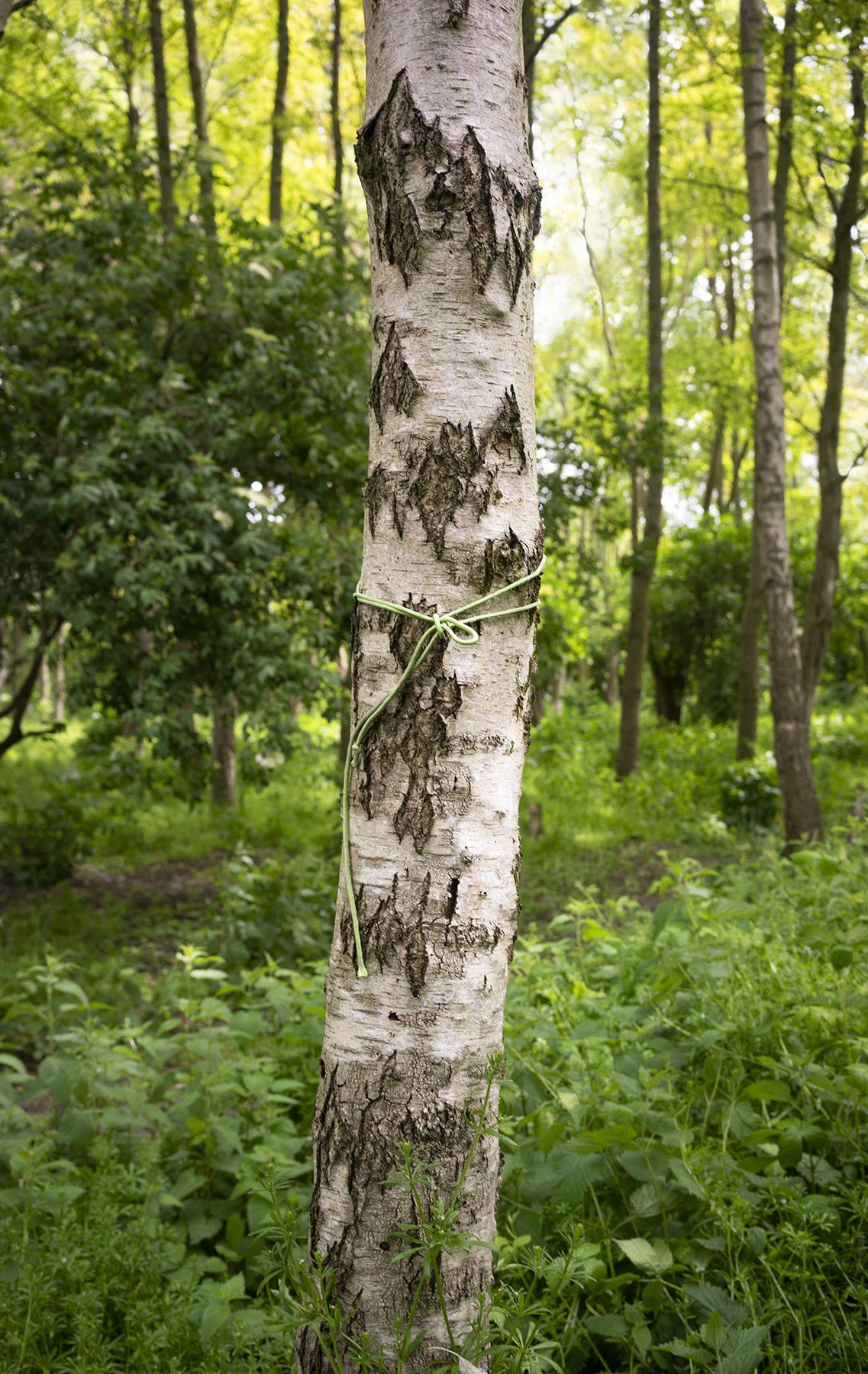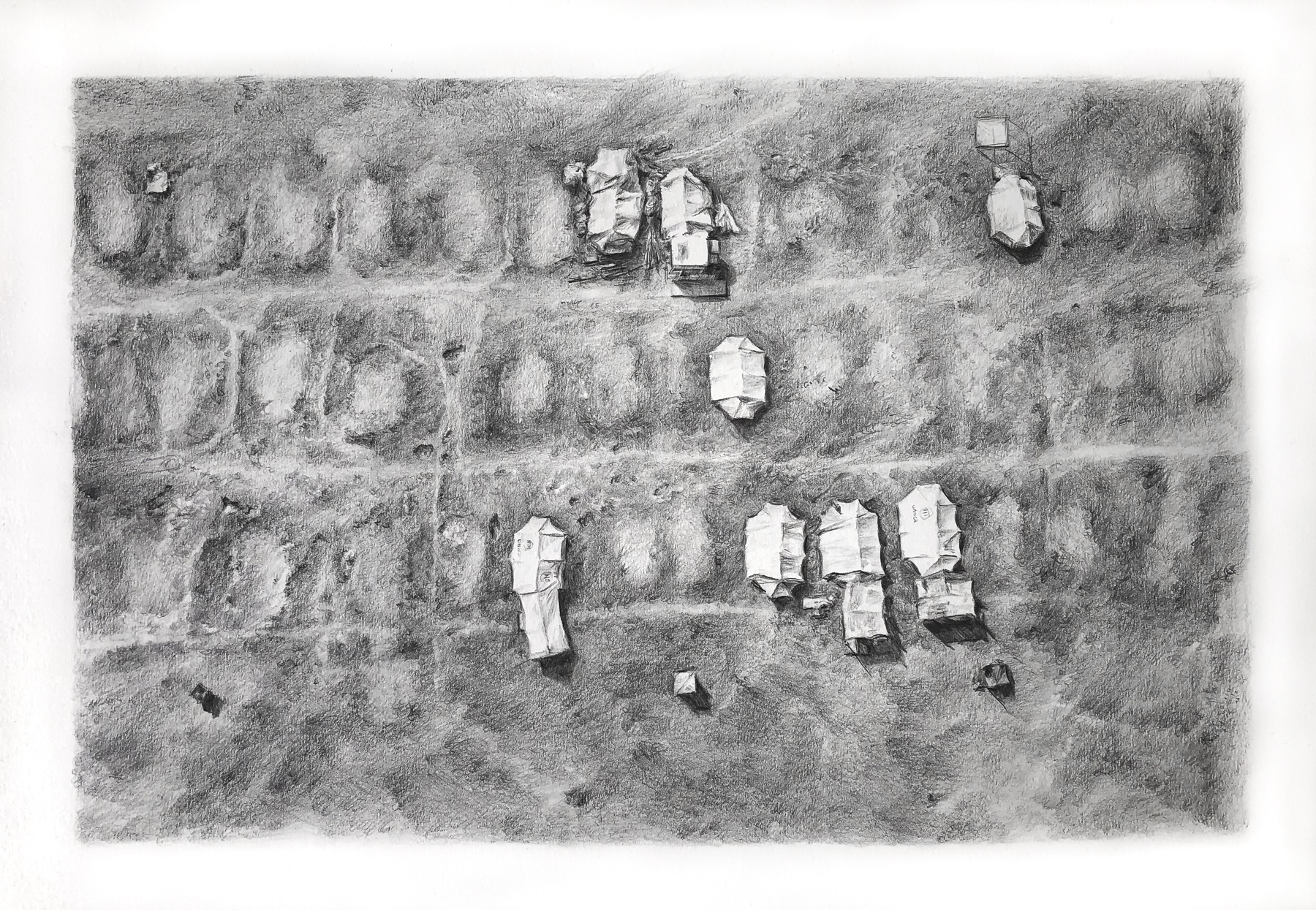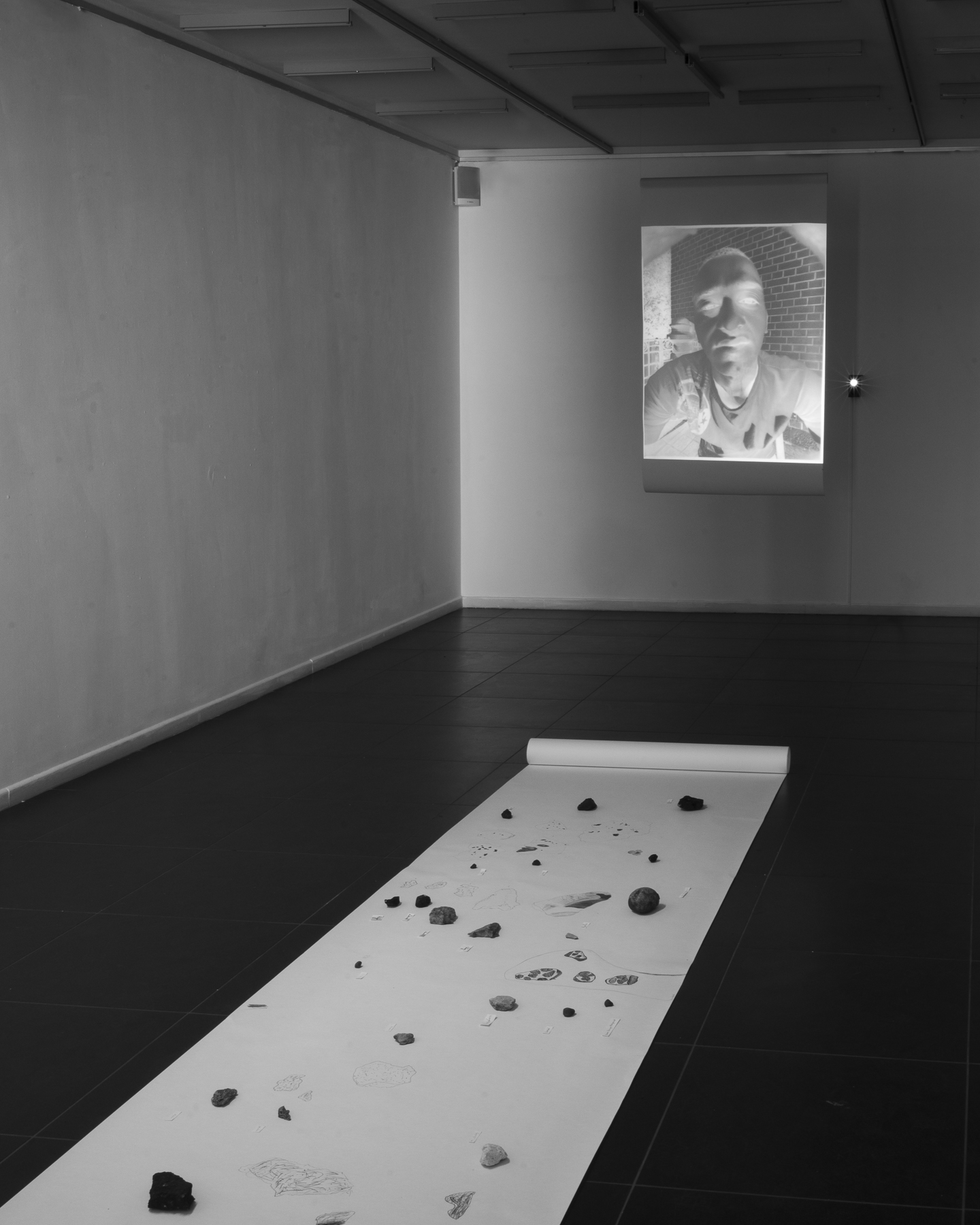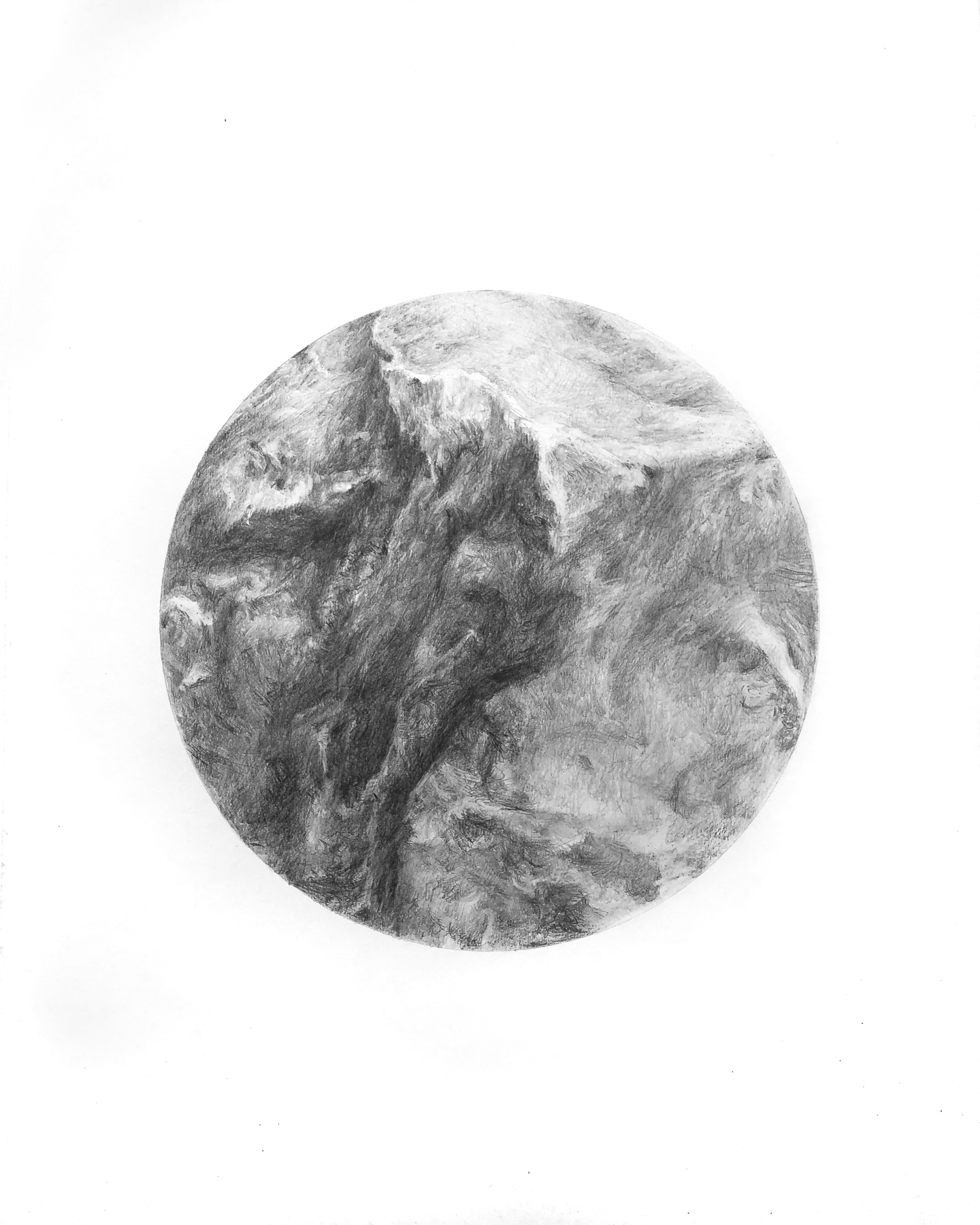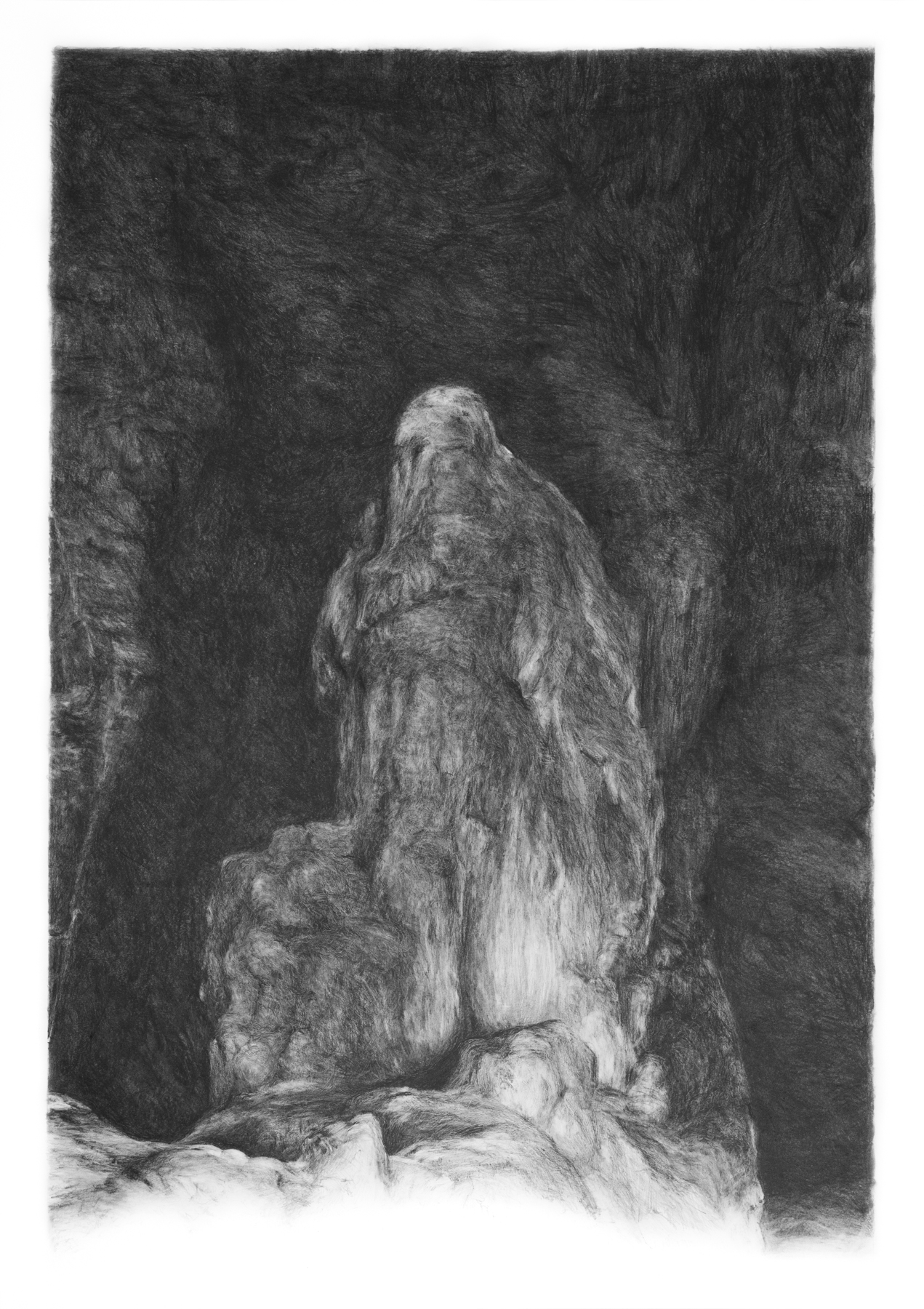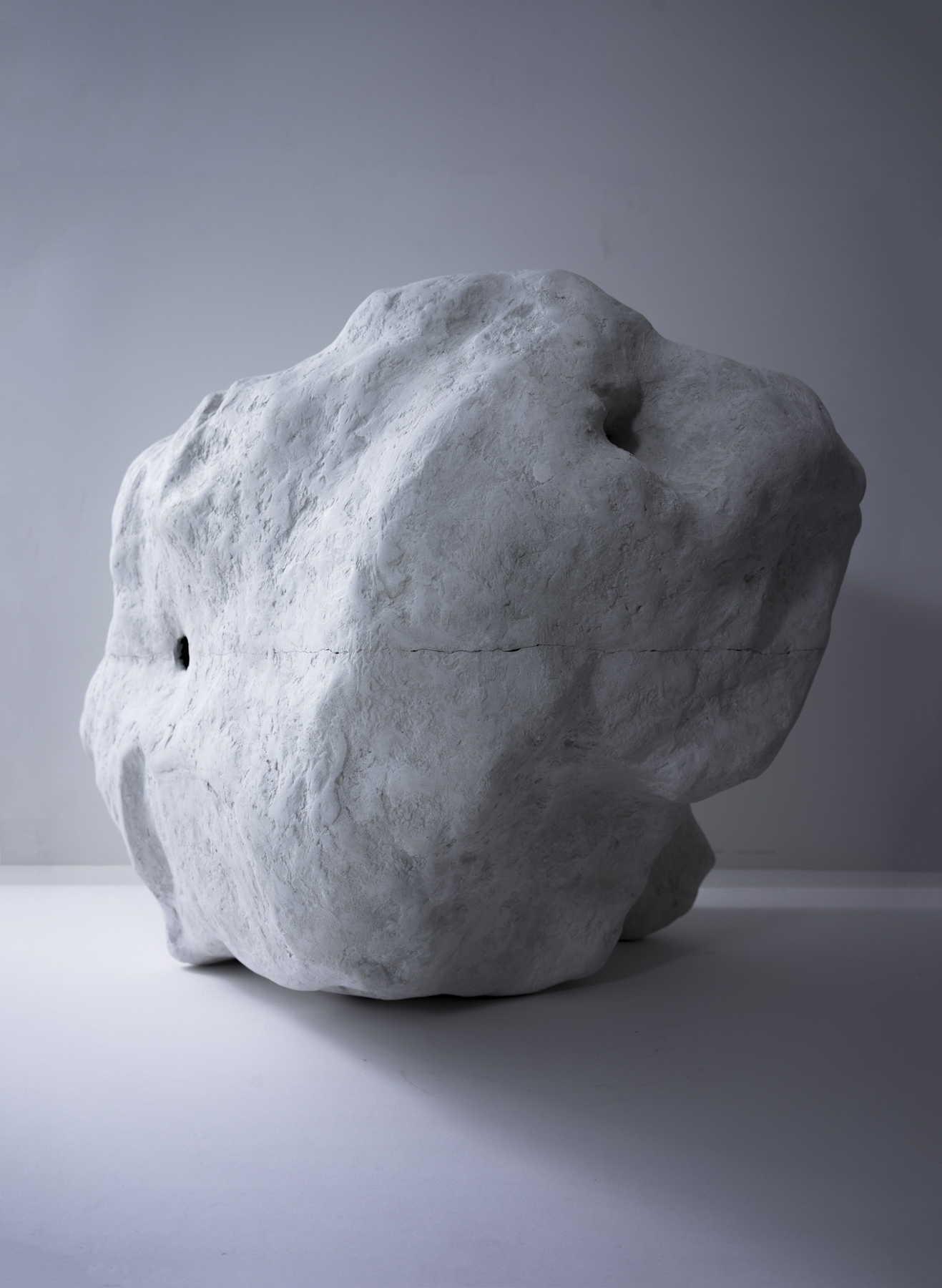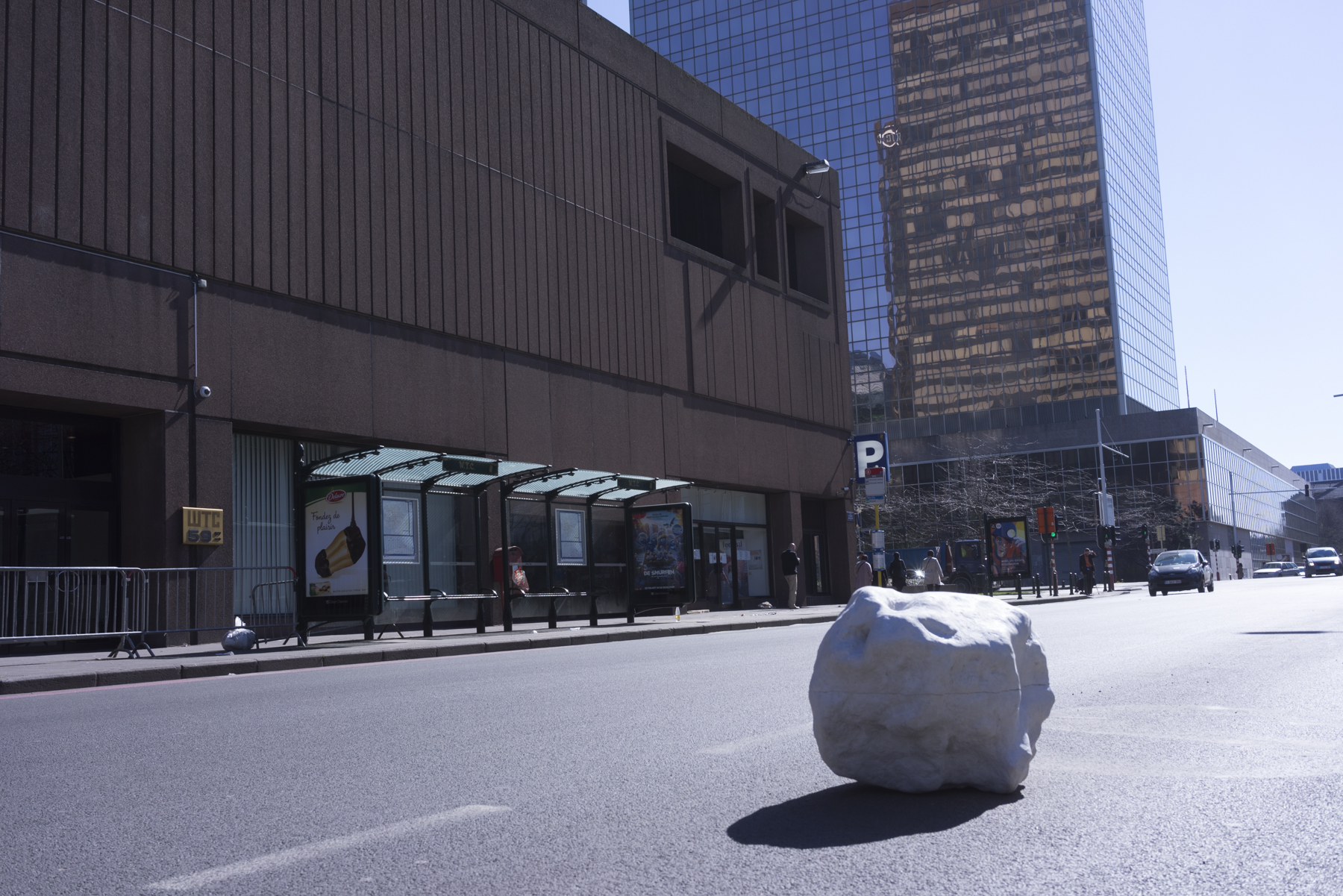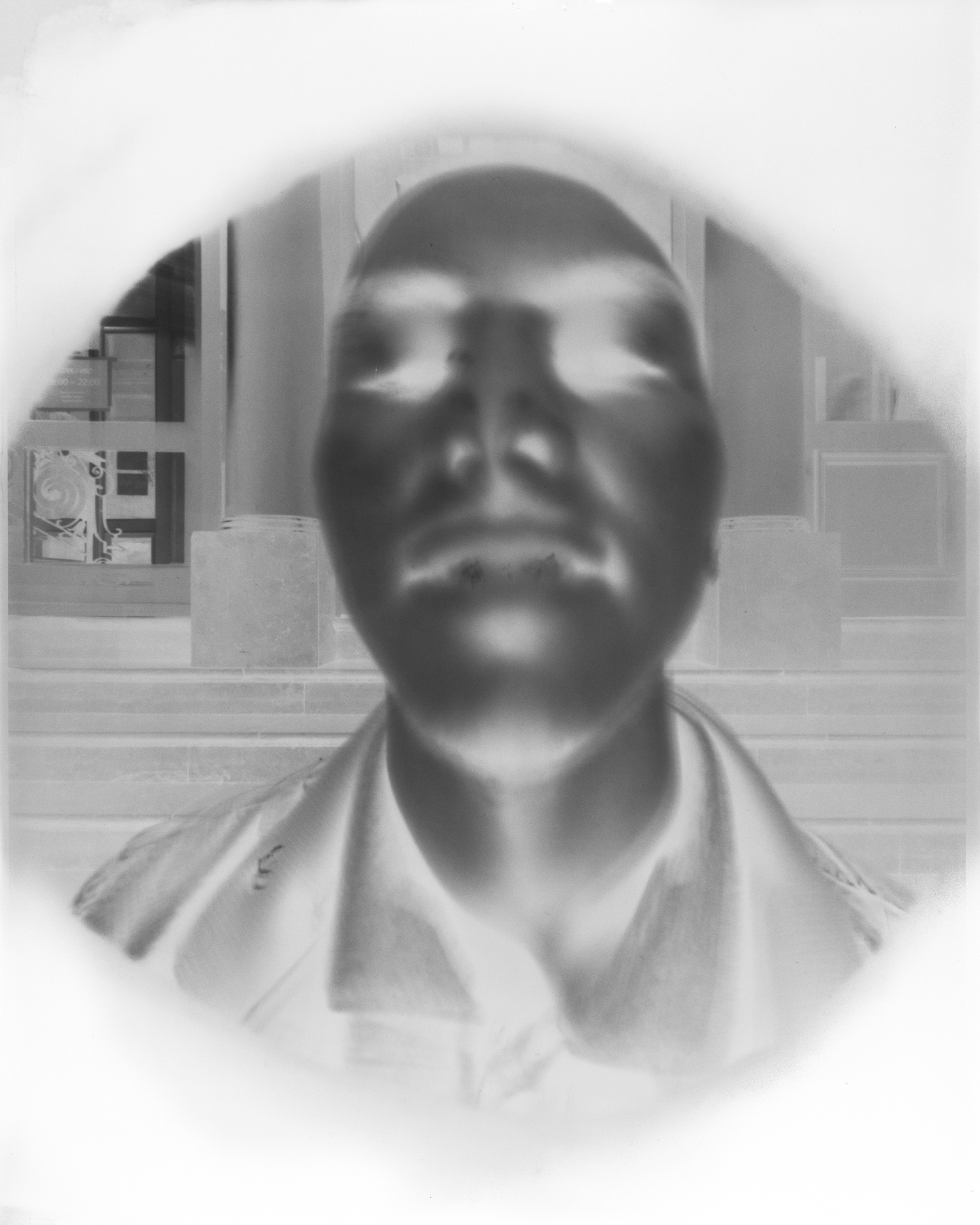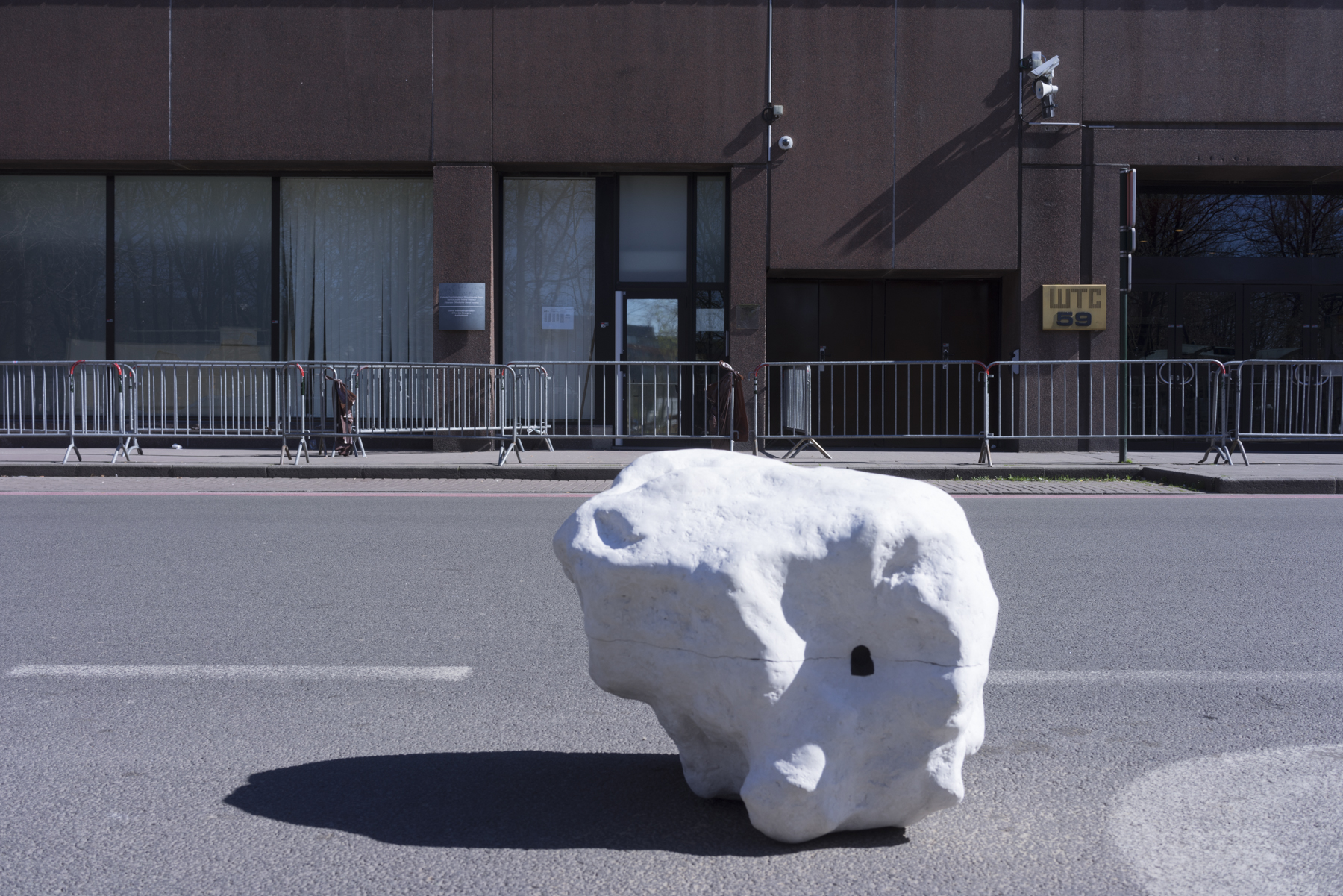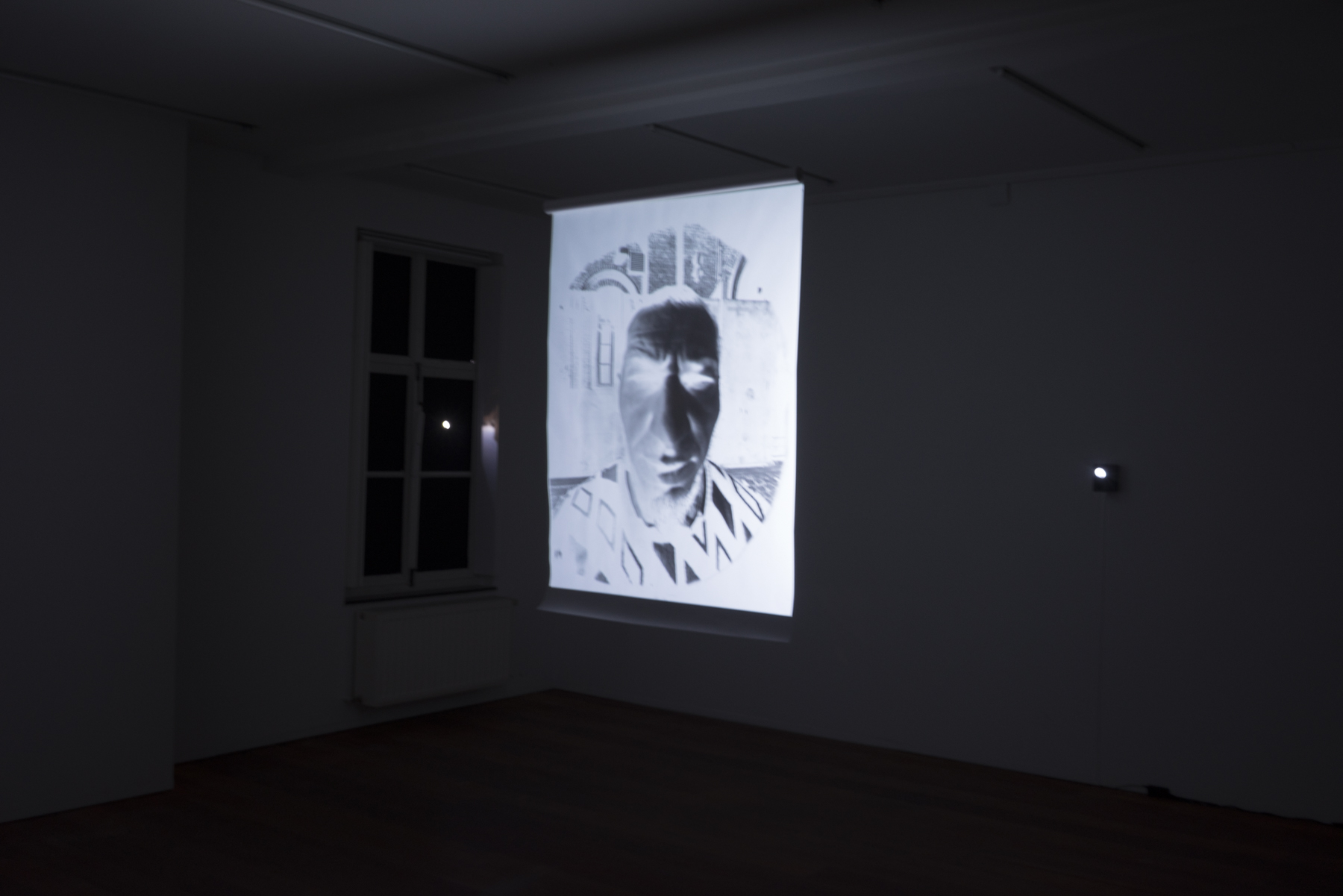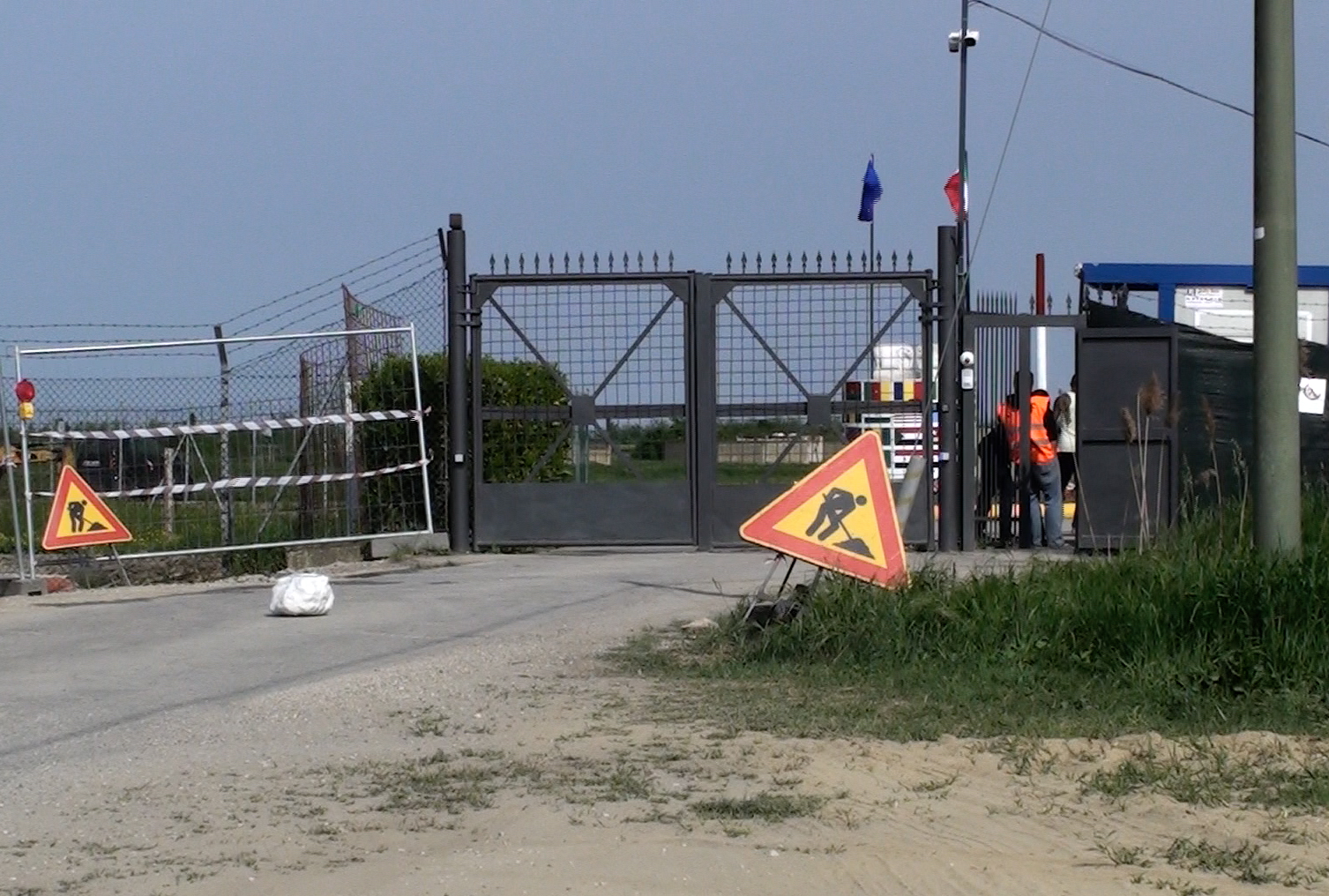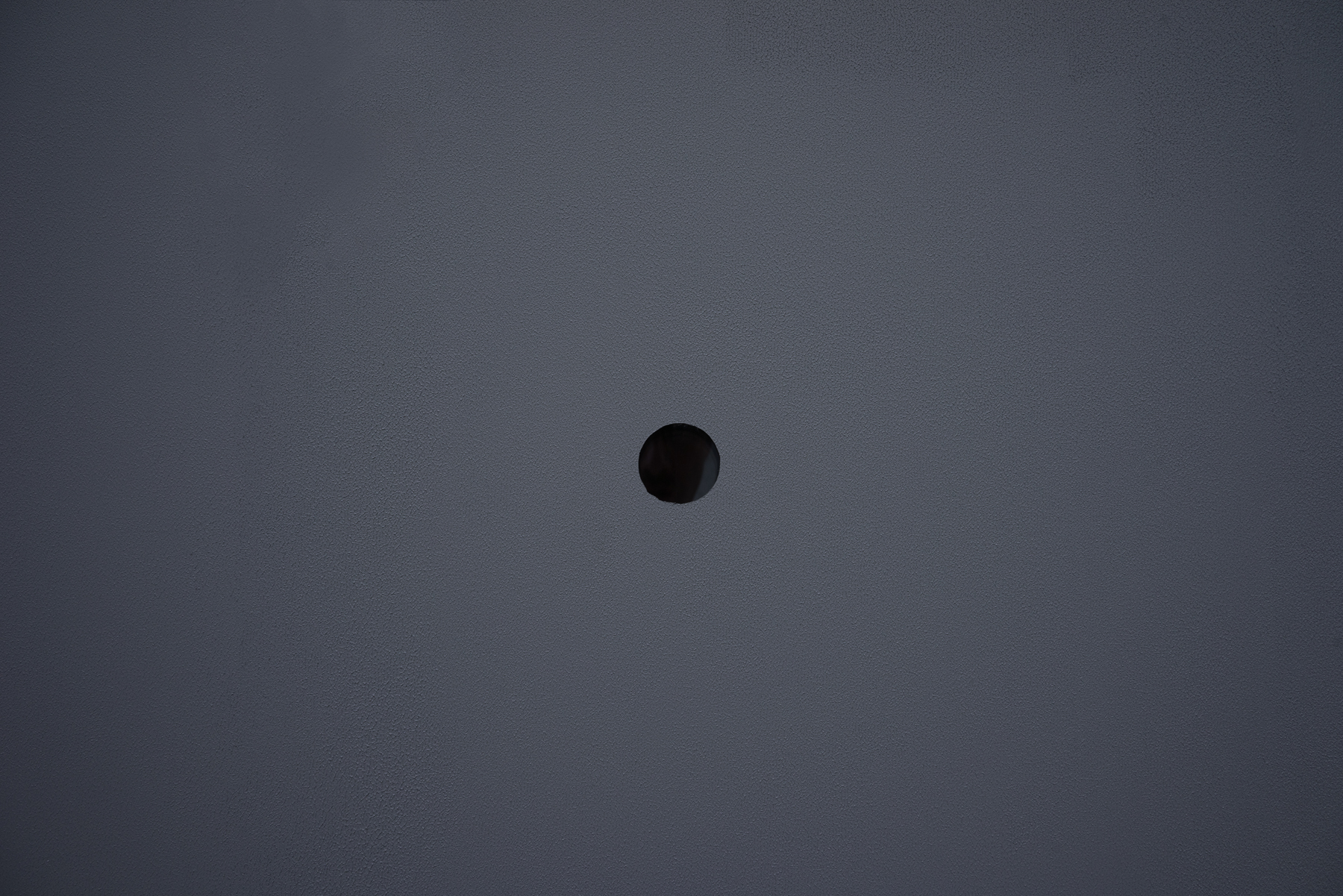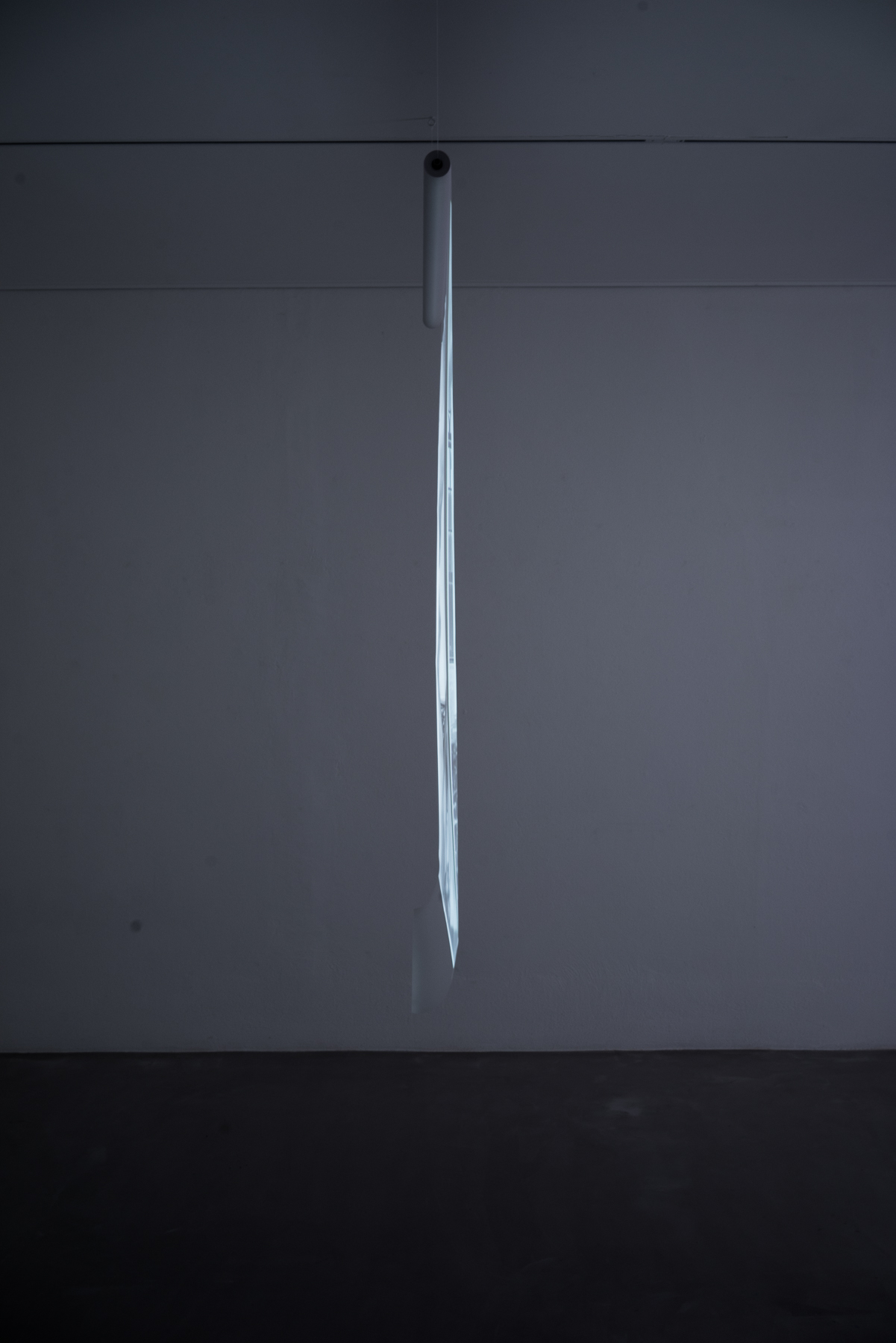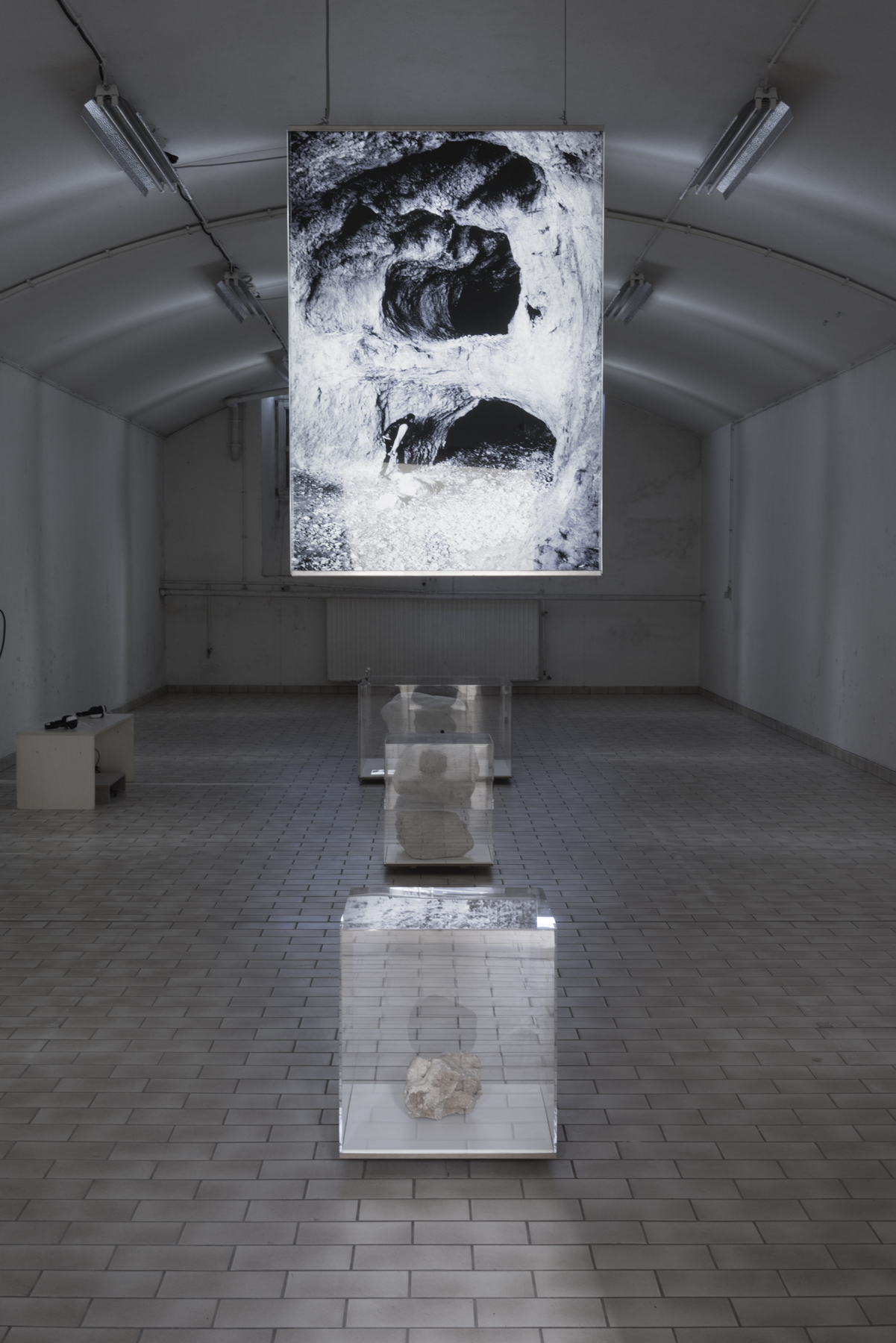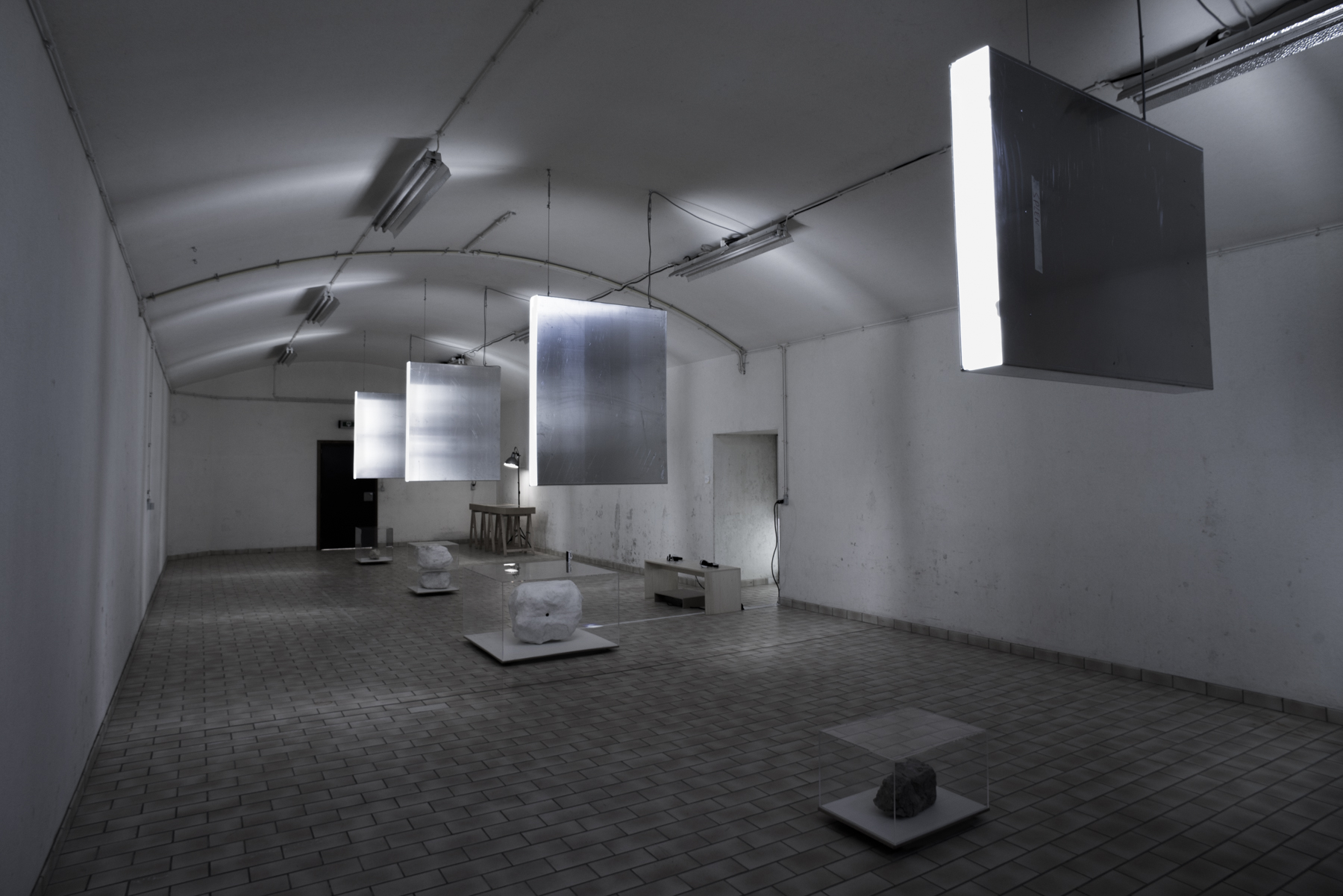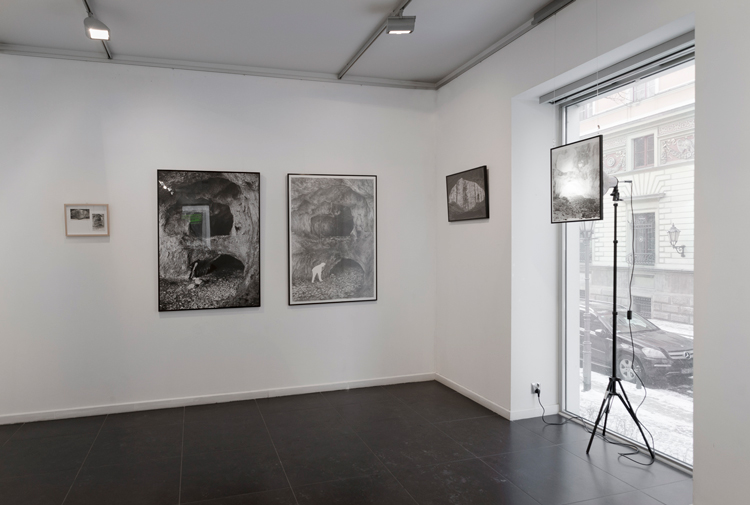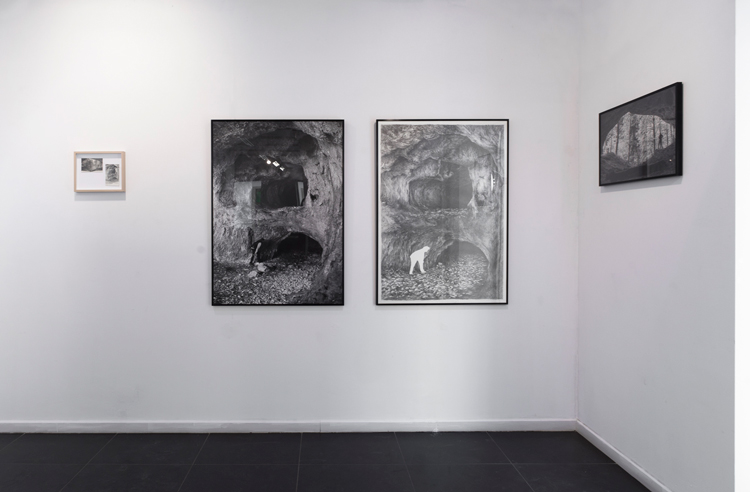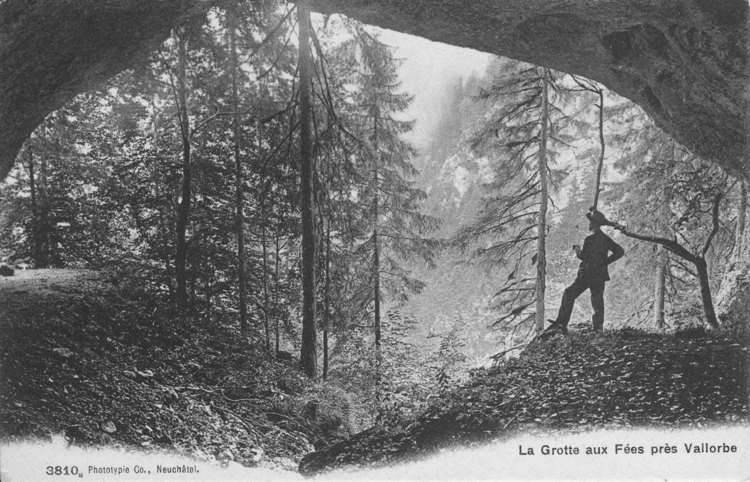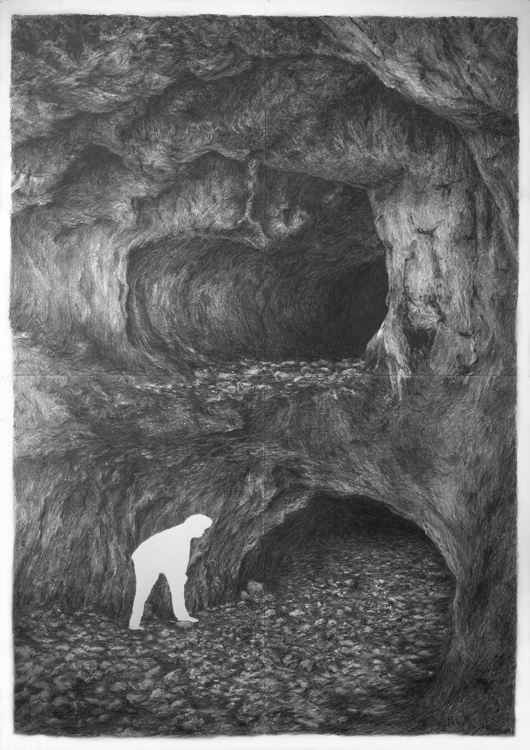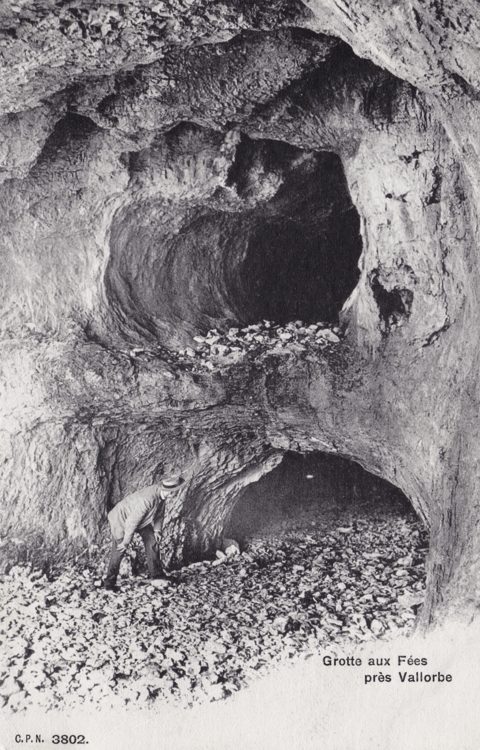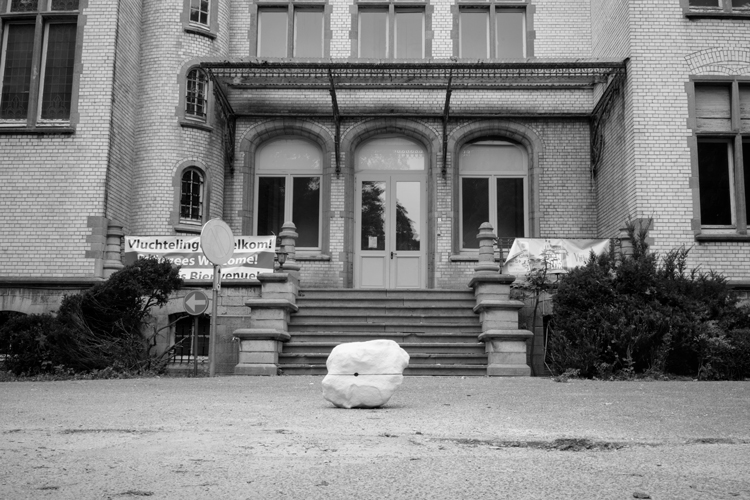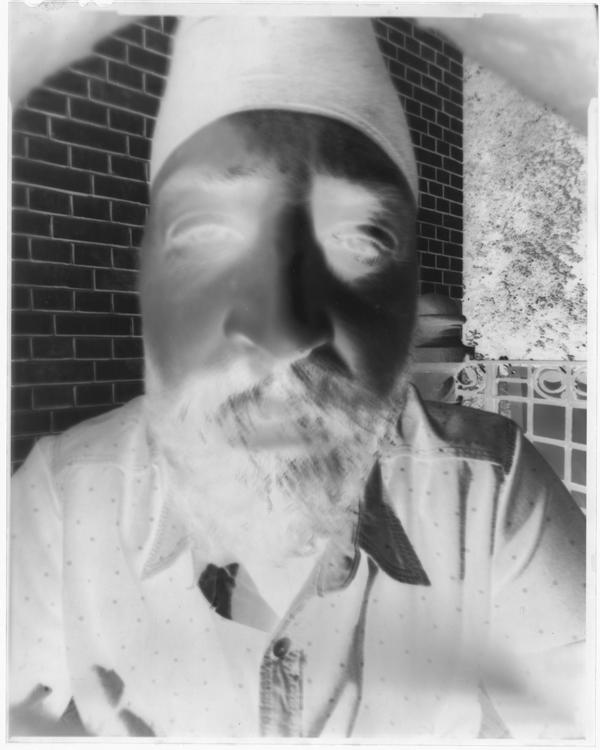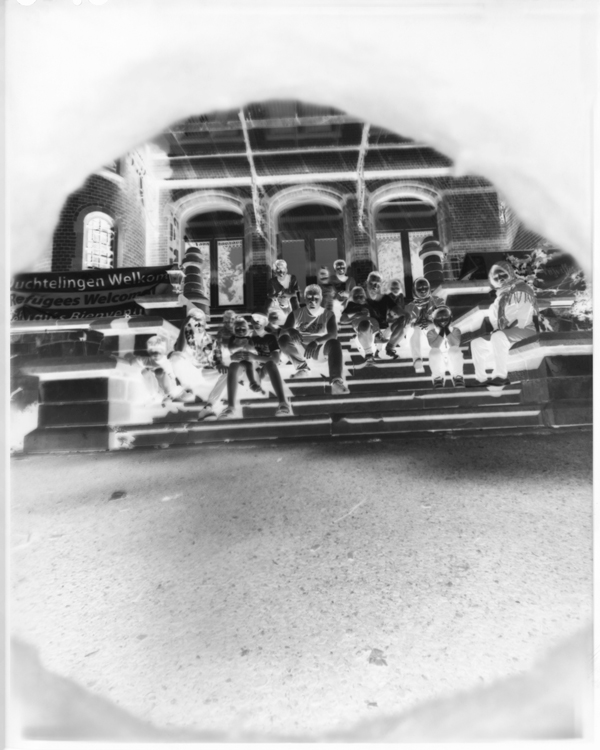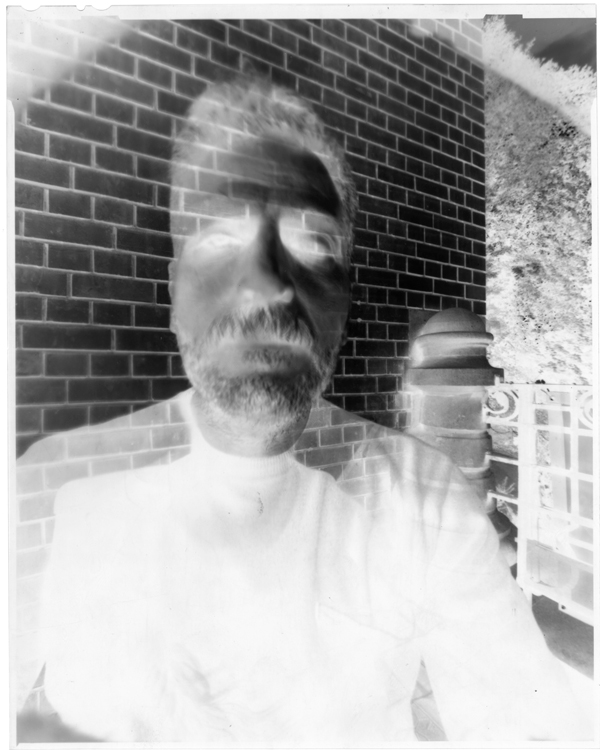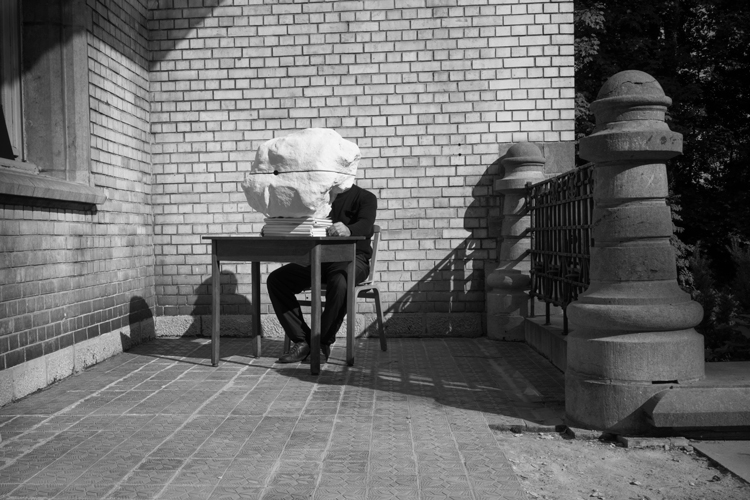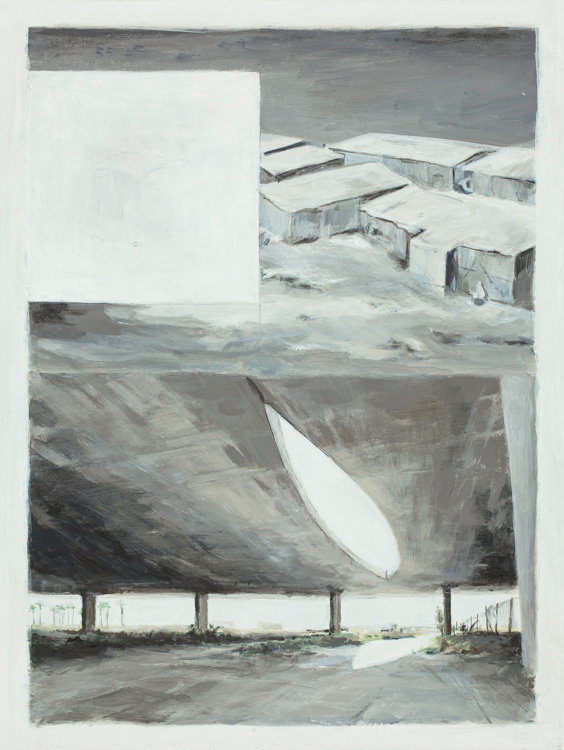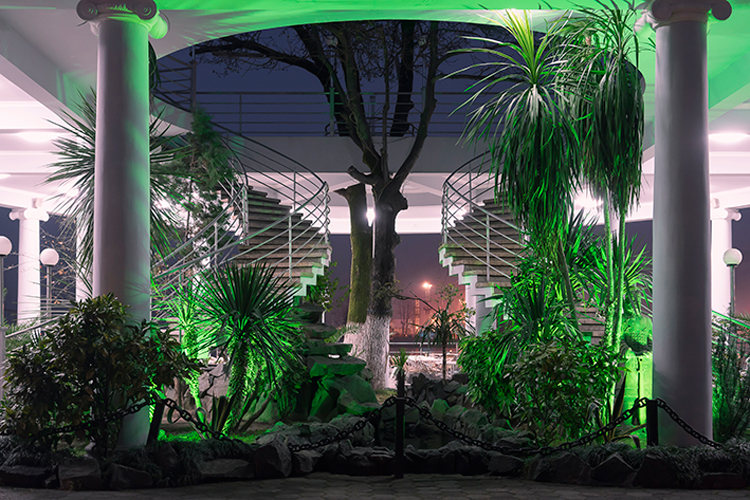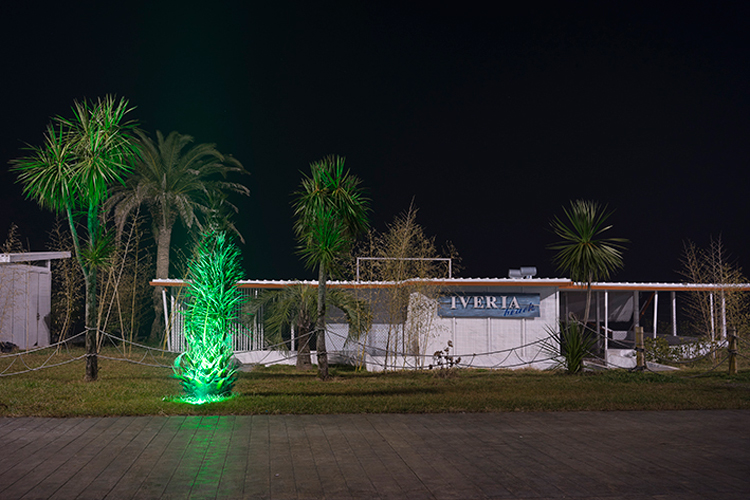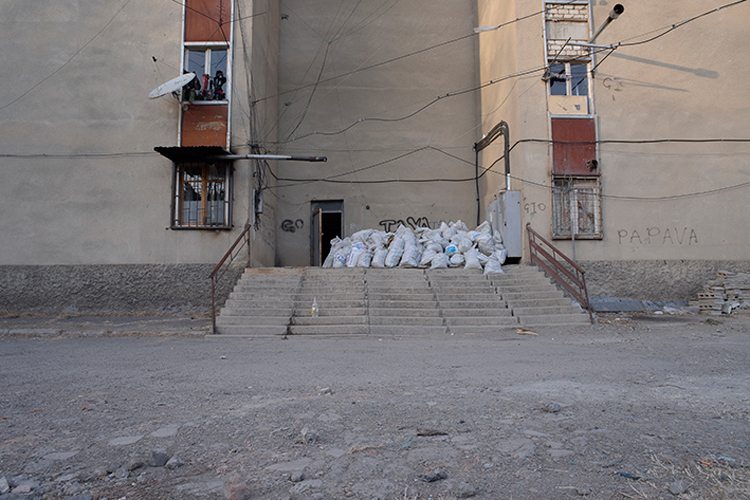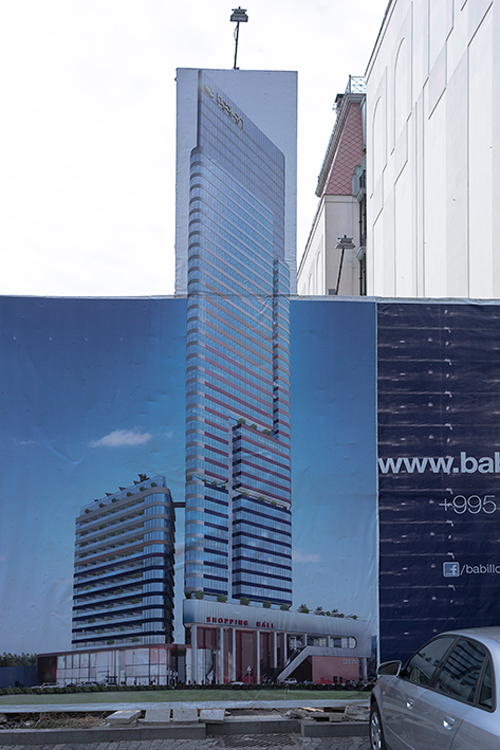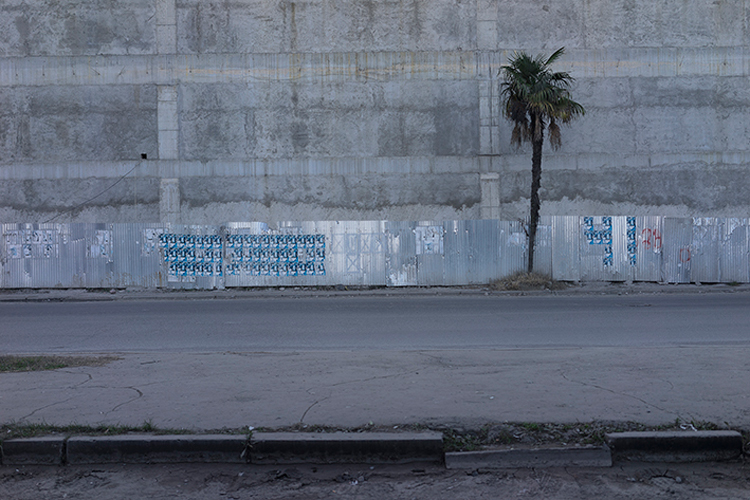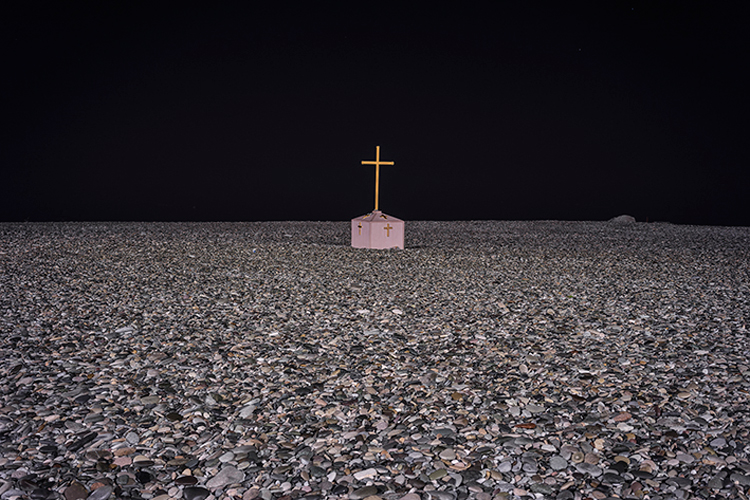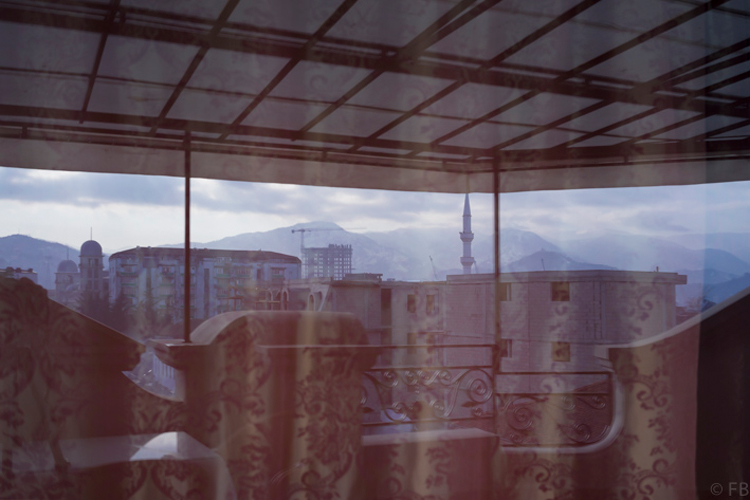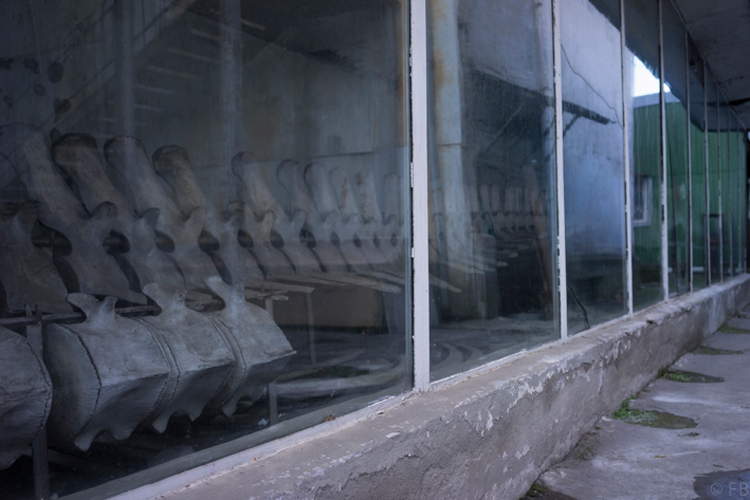DIS-PLANT (2020-ongoing)
- DIS-PLANT (study) © Filip Berte (2020)
Un-Home / Moving Stones (2015-ongoing)
Un-Home / Moving Stones1 focuses on the mechanisms of inclusion and exclusion of uninvited newcomers to our Western societies. Whether documented or not, migrants entering Europe are facing ever more restrictive policies. Moreover, in the guest-countries they are confronted with a social climate of growing polarised discourse and controversy.
Likewise, the uninvited newcomer is forcibly placed ‘in limbo’ – in a border zone stuck between the past and the future, between expectations and reality, between ‘home’ and ‘un-home’.
Filip Berte aims at consciously standing still at different places in Europe that are characterised by this liminal ‘in-limbo’-state, such as refugee camps or asylum seekers’ registration- and reception centers; they are sites that embody a border crossing or ‘rite de passage’, they are the waiting rooms where people are received, but where at the same time they can be tracked down, traced and controlled, and where the decision on their next station in life will be made.
- Untitled © Filip Berte (2019)
- Untitled © Filip Berte (2018)
- Precarious Ghosts Take Care © Filip Berte (2019)
- Untitled © Filip Berte (2019)
- Precarious Ghosts Take Care © Filip Berte (2019)
- Momentum VII, installation view, Wroclaw © Filip Berte (2019)
- Momentum VII, installation view, Wroclaw © Filip Berte (2019)
- Untitled © Filip Berte (2019)
- Untitled © Filip Berte (2019)
- Untitled © Filip Berte (2019)
- Stone Camera Obscura (small) © Filip Berte (2016)
- Stone Camera Obscura © Filip Berte (2016)
- Untitled © Filip Berte (2017)
- Momentum III – Immigration Office Brussels © Filip Berte (2017)
- Untitled © Filip Berte (2018)
- Untitled © Filip Berte (2018)
- Untitled © Filip Berte (2018)
- Un-Home / Moving Stones – Evictio © Filip Berte (2018)
- Untitled © Filip Berte (2018)
- Untitled © Filip Berte (2017)
- Momentum III – Immigration Office Brussels © Filip Berte (2017)
- Roger Raveelmuseum, Machelen-ad-Leie (BE) © Filip Berte (2017)
- Roger Raveelmuseum, Machelen-ad-Leie (BE) © Filip Berte (2017)
- Momentum IV, Venice (IT) © Filip Berte (2017)
- Untitled © Filip Berte (2017)
- Momentum IV, Venice (IT) © Filip Berte (2017)
- Momentum IV – Venice © Filip Berte (2017)
- Untitled © Filip Berte (2017)
- Untitled © Filip Berte (2017)
- Untitled © Filip Berte (2017)
- Untitled © Filip Berte (2017)
- Untitled © Filip Berte (2017)
- Untitled © Filip Berte (2015)
- Gutta Cavat Lapidem – dAM (CH) © Filip Berte (2017)
- Gutta Cavat Lapidem – dAM (CH) © Filip Berte (2017)
- Gutta Cavat Lapidem – dAM (CH) © Filip Berte (2017)
- Gutta Cavat Lapidem – dAM (CH) © Filip Berte (2017)
- Gutta Cavat Lapidem – dAM (CH) © Filip Berte (2017)
- Gutta Cavat Lapidem – dAM (CH) © Filip Berte (2017)
- Gutta Cavat Lapidem – dAM (CH) © Filip Berte (2017)
- Gutta Cavat Lapidem – dAM (CH) © Filip Berte (2017)
- Citadel’arte, Diest (BE) © Filip Berte (2016)
- Citadel’arte, Diest (BE) © Filip Berte (2016)
- Hacking Habitat, Utrecht (NL) © Filip Berte (2016)
- Arttrakt Gallery, Wrocław (PL) © Filip Berte (2016)
- Arttrakt Gallery, Wrocław (PL) © Filip Berte (2016)
- Untitled © Filip Berte (2015)
- Untitled © Filip Berte (2015)
- Untitled © Filip Berte (2015)
- Untitled © Filip Berte (2015)
- Untitled © Filip Berte (2015)
- Untitled
- Untitled © Filip Berte (2015)
- Untitled © Filip Berte (2015)
- Untitled
- Untitled © Filip Berte (2015)
- Untitled © Filip Berte (2015)
- Untitled
- Untitled © Filip Berte (2016)
- Abtenhuis, Geraardsbergen (BE) © Filip Berte (2016)
- Abtenhuis, Geraardsbergen (BE) © Filip Berte (2016)
- Abtenhuis, Geraardsbergen (BE) © Filip Berte (2016)
- Untitled © Filip Berte (2016)
- Untitled © Filip Berte (2016)
- Untitled © Filip Berte (2016)
- Untitled © Filip Berte (2016)
- Untitled © Filip Berte (2016)
- Untitled. © Filip Berte (2016)
- Untitled
- Untitled © Filip Berte (2016)
The Reappropriation of a Simple Form (2014)
The Reappropriation of a Simple Form is made in the framework of the Suspended Spaces project.1
The Reappropriation of a Simple Form starts from the idea of conflictual realities to be found in the historical as well as present sociopolitical contexts in which Oscar Niemeyer’s (unfinished) International Fair (1960’s) in Tripoli (North Lebanon) was realized. Since the outbreak of the civil war in Lebanon (1975) further construction had stopped, leaving the place like a huge empty lung (70 hectares / 175 acres) in a body of dense urban fabric. The International Fair was never used according to the functionality for which it was planned and designed. Its dysfunctional void and the archetypical architectural artefacts, illustrating the architect Niemeyer’s disciplinary maturity at that time, are no more than an exceptional bookmark of untouched modernist heritage. But in the same time, its museum-like appearance in a tense and troubled area in the Middle East, opens up questions relating its autotelic character.
- #4
- #3
- #2
- #1
Batumi Transitus (2014)
In december 2013 and January 2014, two years after his first visit1 to Georgia, Filip Berte traveled again to this intriguing country in Transcaucasia, in the border area of Europe and Asia.
With Batumi Transitus2 Berte zooms in on Batumi, a small port city on the Black Sea coast and capital of the Autonomous Republic of Adjara in Southwest Georgia.
Berte’s point of view for this Batumi-series is in line with his earlier work in Tbilisi1. He traces and documents the material changes in the city, as imprints of the turbulent transition process in Georgia.
- Still Life
- Iveria Beach
- IDP Hotel Amirani #1
- Soviet Dolphin
- Babilon
- Palmtree
- Maritime Dream
- Cross on the Beach
- Small House In Between
- Christmas Tree
- Hyper Construction
- Soviet Workers’ Dormitory
- Ornament and Crime
- IDP – Kitchen #1
- IDP – Bedroom
- Batumi Dawn
- Whale
- Hyper-Façade
House of Eutopia (2013)
With the installation House of Eutopia Filip Berte wants to examine and reveal the social, political, geographic and historical margins of Europe. As an observer of the margin and the outsider, Berte tries with House of Eutopia to make the visitor aware of this reality. Under the name of Eutopia Filip Berte has been constructing his house room by room at the CAMPO arts centre (Ghent, B) since 2006. He has exhibited and worked from Ghent to Berlin, Prague to Poznan and put the final touches to House of Eutopia in 2013 in Utrecht.

